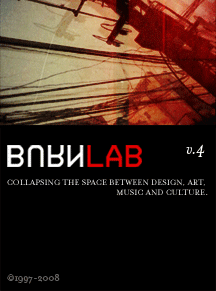As a sensory-oriented, particularly visual person, absorbing inspiration is a 24/7 job I can't help do and can't help adore. As much as I love music, live theater, print, architecture, etc., nothing does it for me quite like movies - especially highly stylized science fiction movies.
Long before I even entered college, my intent was to become a production designer for science fiction films by following in the footsteps of people like Syd Mead and Joe Johnston - who both studied automotive design at Art Center before going on to design films such as Blade Runner and the original Star Wars trilogy, respectively. Part way through my time at CCS though, I lost interest in designing for the screen and became much more interested in the sensory and psychological effects design could have on people in the real world. Young, overly-confident, and inspired by a handful of almost equally young instructors I greatly admired, I felt like part of a new movement which challenged traditional Bauhaus thinking head-on by vastly expanding the definition of "function" in the seemingly tired old adage which had defined design education since the beginnings of modernism.
Of course, I learned later that Charles and Ray Eames, Eero Saarinen and their peers at Cranbrook had done exactly this many decades before my time... and much better. The problem was [an still is] that most people take "function" in such a primitive and literal sense, there is no room for the function of emotions, the nuances of human psychology, or any of the highly complex ways people interact with an object, an environment or an idea that defines the eventual form. There was never anything wrong with the phrase itself - only the interpretation.
I left the automotive program at CCS [which I felt represented the shallowest possible interpretations of both function and form] to focus on environmental and experiential design. I even turned down an offer to interview with Lucas Films shortly after graduation. [The woman at the other end of the line at Skywalker Ranch seemed annoyed, and perhaps it was a foolish move, but I was quite intent on my direction at the time, and was frankly scared by the idea of moving to California.] Science fiction design never left me though, and remains my biggest source of inspiration - not just aesthetically, but in the holistic and thorough approach required to create entire worlds which are both captivatingly alien and realistic enough to be believable.
Although I still have no desire to design for fantasy scenarios, the design of science fiction films - particularly the dark, saturated, epic dystopias of the early 1980s - are still an incredible influence on not just my work, but an entire generation across multiple disciplines.
The influences of Blade Runner and Brazil have been talked to death - and for very good reason. The recent explosion of steampunk in popular culture wouldn't have the City of Lost Children - and certainly not typewriters retrofitted with Fresnel lenses and flickering cathode ray tubes to reference without the groundwork Ridley Scott and Terry Gilliam laid. Heck, cyberpunk as we know it may not have existed without Blade Runner.
In the following posts, we'll discuss the influences various sci-fi films have had on everything from fashion and product design, to music and art, starting with David Lynch's Dune.
Monday, June 09, 2008
Dystopian Sci-Fi Design and Culture: A Personal Introduction
Posted by:
Unknown
at
6/09/2008 07:37:00 PM
![]()
Subscribe to:
Post Comments (Atom)

No comments:
Post a Comment